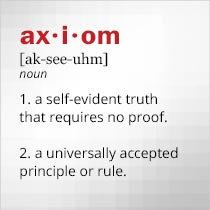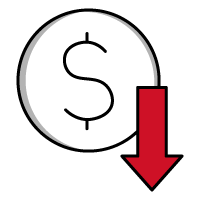Keep the Light Shining on Solar Power Systems
November 05, 2020
 |
Low-cost solar energy is an invaluable, renewable resource for many homes and businesses, using photovoltaic (PV) cells to convert sunlight to electricity. While the sun may not always be shining, sunlight is the most abundant natural resource on the planet. Intelligently designed, solar-power installations efficiently convert that sunlight to electric power which can be stored until needed, such as during nighttime when the sun is not shining. Several conversion technologies are used to convert sunlight to electricity, including semiconductor-based PV cells and concentrated solar power (CSP) systems technology. In each case, regular maintenance is required to achieve optimum results from the power conversion process and several basic electrical measurements are essential actions in delivering consistent, reliable performance from any solar power installation. Those measurements can be greatly simplified with the right test tools.
Radiant energy (photons) from the sun is typically transformed to electricity (electrons) by one of two power conversion approaches, using PV cells or CSP technology. PV cells serve as building blocks for the many modules mounted side by side and interconnected to form rooftop solar panels. Each PV cell produces about 1 or 2 W of DC electric power, so hundreds are needed to generate reasonable amounts of power. In recent years, ground-mounted solar panels have been growing in popularity compared to roof-mounted solar panels, especially for setups where a building’s roof may not provide optimum exposure to the sun. By operating ground-mounted solar panels along with PV trackers, which move the solar panels to follow the maximum sunlight, the electric power yield can be boosted compared to a stationary, roof-mounted solar array. For both stationary and tracking PV arrays, the electrical output will vary as a function of received sunlight; in addition, the electrical output of a ground-mounted solar array with PV tracker will vary as the PV cells are moved relative to the sun. An additional PV system configuration employs solar concentrators such as mirrors to increase the efficiency of PV cells by focusing solar energy on the PV cells.
CSP solar energy systems also convert sunlight to electrical energy, but they do so by extracting energy from changes in temperature brought about by solar radiation. These systems typically employ a mast-mounted, high-efficiency receiver to capture solar energy. This solar energy causes a rise in temperature in a heat-transfer medium, such as a liquid. The resulting thermal energy can be used to drive turbine engines and produce electrical energy.
Solar panels based on PV cells are typically part of a solar power system that includes inverters to transform DC electricity from PV cells to AC electricity used for many applications. Energy storage units, such as high-power batteries which supply electrical power when sunlight is not available, are also essential components in any solar power system that must be regularly tested as part of any maintenance program. Maintenance should involve measurements of the main system components, such as solar panels, energy storage units, inverters, and their interconnections, and their prime performance parameters. PV cells, modules, and panels, for example, are typically characterized in terms of maximum power, maximum voltage, and maximum current, as well as by efficiency. Main test tools for checking solar power systems should provide measurements of power, voltage, and current at maximum levels that exceed the performance limits of the solar power system’s components. Often, it can be useful to work with test equipment that is capable of dynamic and static measurements, so that a solar power system and its components can be evaluated under changing conditions, such as tracking positions and ambient temperature.
Keep Testing Simple
Modern test solutions for solar power systems and their components bring a great deal of measurement capability to a test site through integration, by combining what previously might have been three or four instruments into one box. The NH Research 4760-6, one of the 4760 LXI Series of High-Voltage DC Loads, packs all the functions of a digital multimeter (DMM), digital storage oscilloscope (DSO), and transient generator into a single rack-mount enclosure. Ideal for checking component interconnections, power supplies, energy storage units, and high-power inverters within a solar power system, it can perform 18 different voltage, current, power, and timing measurements and can serve as a complex DC load. It can execute dynamic measurements over a constant voltage range of 7 to 600 V DC, maximum current of 300 A, and maximum power of 6 kW.
The Keysight E4360A solar array simulator is also highly integrated in a small package. The 2U rack-mount unit is essentially a programmable DC power source designed to simulate the current-voltage (I-V) responses of different solar arrays. It offers two outputs with as much as 600 W power per output port (1200 W total) and has a voltage range of DC to 130 V DC and is rated for maximum short-circuit current of 5 A.
For multifaceted solar-power testing, Keysight also provides the model RP7953A bidirectional DC power supply which can perform the jobs of several different power supplies at one time. A member of the company’s RP7900 Series, it features a regenerative design that saves energy during testing and returns it to the power grid for reduced measurement costs. Users can program voltage and current profiles with as many as 512 steps and can set up the RP7953A with parallel outputs in constant-current (CC) or constant-voltage (CV) mode to emulate a wide range of solar power installation conditions, including the emulation of the high-power batteries used for different solar power storage tasks. The RP7953A has a voltage range of 0 to 950 V dc, a current range of 0 to ± 20 A, and a power range of 0 to ±10 kW. It also features a fast settling time of 500 μs in support of dynamic measurements during the turn-on and turn-off actions of a solar power component, such as a storage battery or inverter.
Programmable electronic loads are versatile test tools for characterizing solar power system performance and Chroma provides numerous units with high-power capabilities. For example, the Chroma 63212A-1200-480 DC electronic load is part of the 63200A series of loads with instruments capable of as much as 24 kW power and 2 kA current. As many as 10 of these units can be connected in a master/slave configuration to reach very high-power levels. The model 63212A-1200-480 DC electronic load, which reaches peak levels of 12 kW power, 1.2 kV voltage, and 480 A current, can work with user-defined waveforms and perform a wide range of automatic measurements, including battery discharge testing and automatic over-current and over-power testing to ensure protection of solar power system components.
Chroma’s 63211 programmable DC electronic load which can operate in constant-current, constant-voltage, constant-power, and constant-resistance modes. It can deliver as much as 15.6 kW power while featuring an operating voltage range of 10 to 1000 V DC. It provides two current ranges, 0 to 30 A and 0 to 150 A, and can achieve its rated current levels with only 1 V DC output. The rugged, rack-mount instrument can be quickly programmed from a clear front panel with LED/LCD display or remotely via different computer connections, including RS-232 and GPIB ports.
For high-power supplies in compact housings, the B&K Precision MR100020 high-voltage DC power supply from can achieve 5000 W power with maximum current of 20 A and maximum voltage of 1000 V DC, all from a 2U high rack-mount enclosure. In addition, as many as 10 units can be connected in parallel to reach 50 kW output power. These versatile testers integrate many useful measurement functions, including the capability to set voltage and current rise and fall times. Programmable test routines can be set with as many as 100 steps from the front panel or remotely via USB, RS-232, GPIB, or LXI computer control.
These are a few examples of the multifunction test tools that can help maintain full performance at a solar power installation. More information and datasheets for these units can be found on their individual model pages accessible by clicking their links above. If you would like assistance choose the right test equipment for your project, contact us today at sales@axiomtest.com or 760-806-6600.
Back to BLOG








